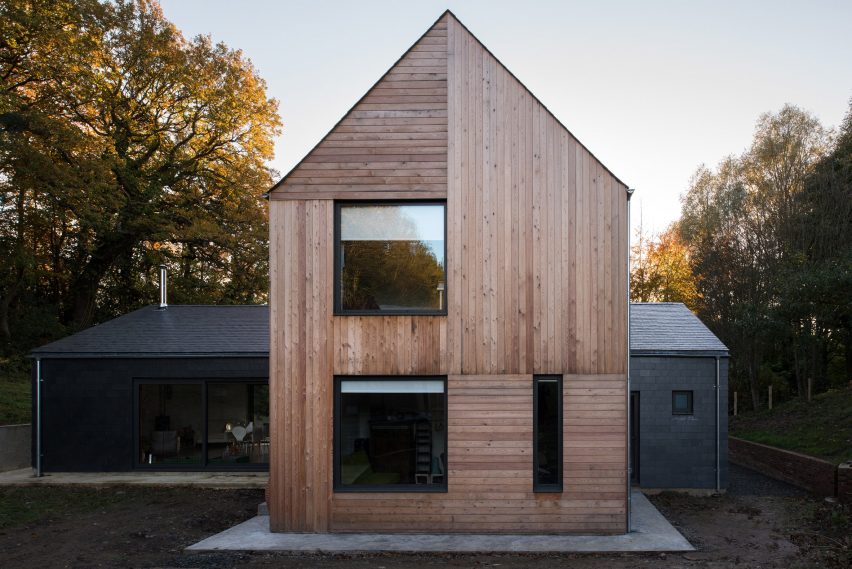Image above from by Alex, architectural designer from Manchester, North West. See more and Shortlist them for your home project here.
The next question people ask after, ‘How much does it cost?‘ is usually ‘How long does it take to build a house?’ With both questions, the answer is highly subjective. BUT if you are at the start of this exciting self-build process, of course you are looking for some kind of average or benchmark to find out how long your self-build will take. So we asked our community of over 1000 residential architects and designers for their first-hand experience. As an average from the responses we received, we found that a realistic time-frame is around 24 months from the appointment of the architect/design professional to completion. See below for more detail on the potential breakdown of the different phases, including design, planning and construction.

Architectural designer Sam went into more detail in his estimate about how long the design and construction phases typically take:
“This is very subjective to the actual project, however I would expect most self builds can be ready from concept to tender stage within 6 months and then anywhere from 6-12 months for the construction phase.”
See Sam’s profile here and shortlist him for your project

Case study 1: Three-bed in Tooting Bec
Project by David, an architect on Design for Me – See his profile here and shortlist him for your project
Project description
The scheme is situated in a gap site close to a high street, presenting challenging overlooking and overshadowing issues with neighbouring residents. The resolution is sensitive and creatively addresses these issues, which was praised by Wandsworth council when taken to planning committee due to planning objections.
Construction cost – £250,000 (£2475 per square metre)
Timescale – 29 months in total
(On a less restricted site and without neighbour objections the architect estimates it would have taken 23 months.)
- Planning – 12 months (due to neighbour objections forcing committee meeting) and subsequent approval (would have taken 9 months without committee).
- Planning Condition Discharge – 5 months.
- Construction – 9 months (would have taken 6 months with a less restricted site).
- Final sign off and snagging, including re-finance – 3 months.
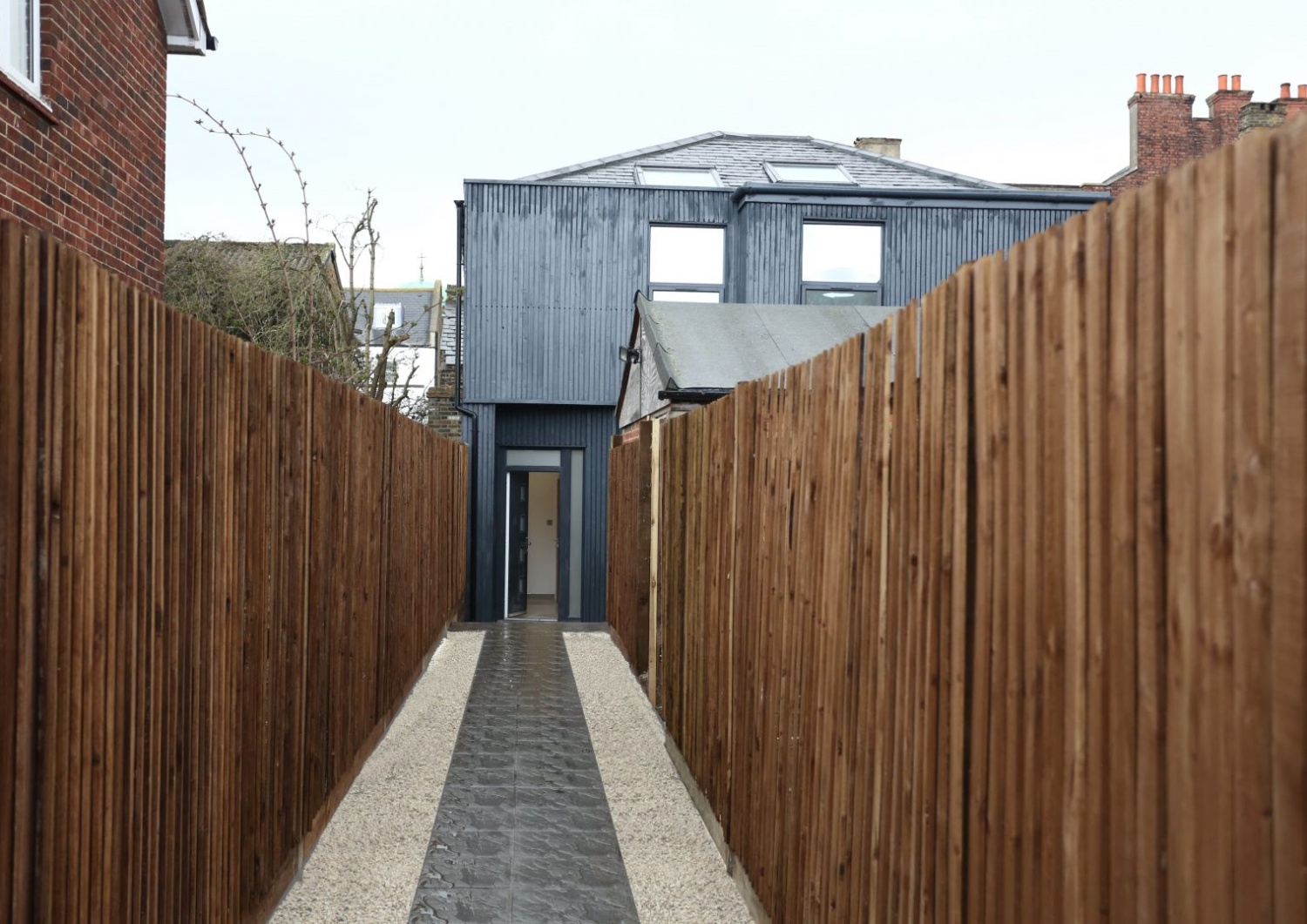
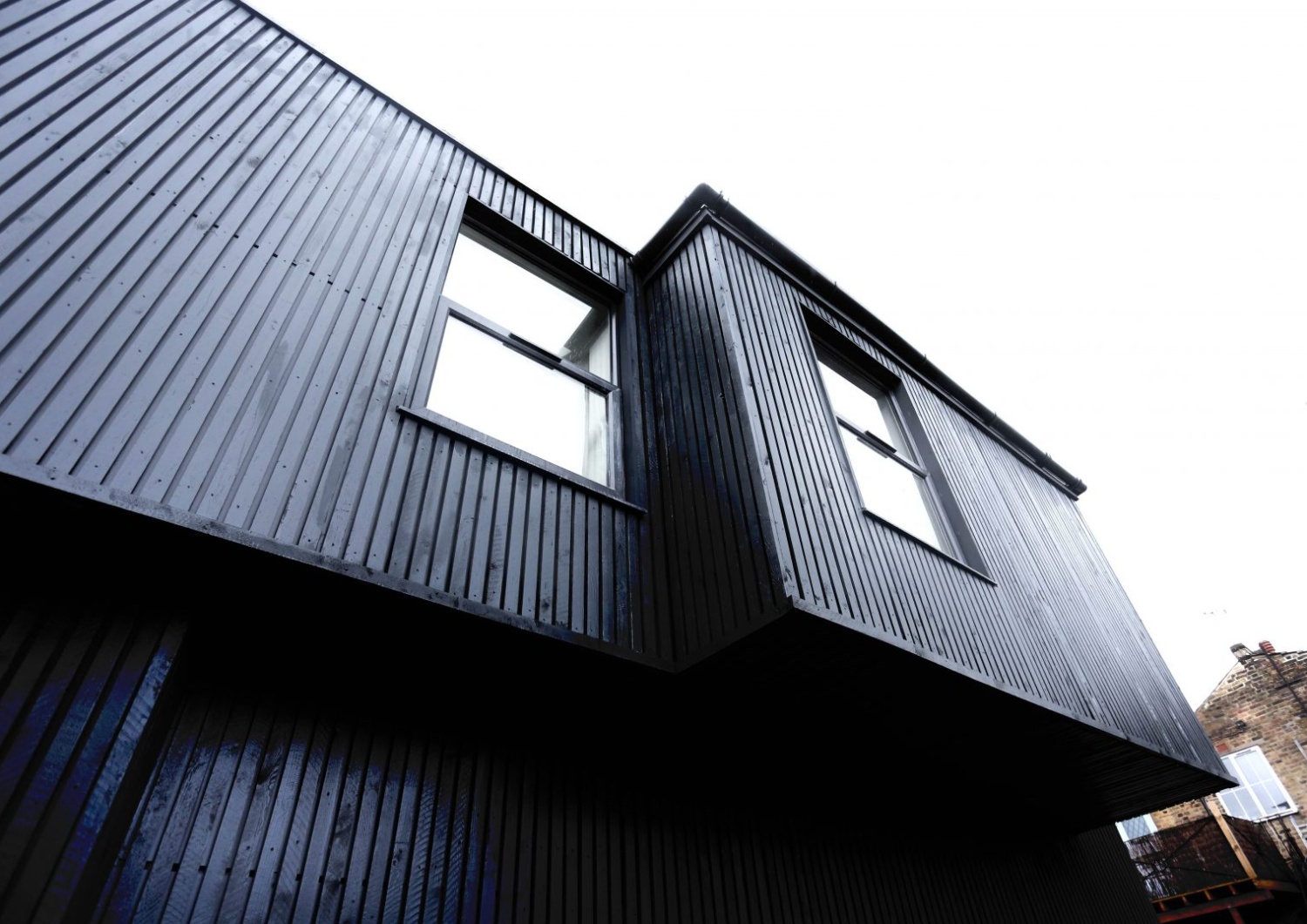


Case study 2: Canal-side new build
Project by Suzanne, an architect on Design for Me – See her profile here and shortlist her for your project
Project description
Open plan, four bedroom, energy efficient house with an industrial aesthetic. The plot is close to a canal and on the edge of a conservation area. The floor area for the scheme was approximately 200 square metres but the house appears to be much bigger due to the use of vaulted ceilings and high-level glazing. Mid-high end finish.
Construction cost – £350,000
Timescale – 25 months in total
Excluding the outline planning permission phase.
- Appointment of architect to construction – 9 months.
- Planning Condition Discharge – 6 months. Outline permission on the plot had previously been secured and the plot was purchased with a view to securing permission for the reserved matters and associated planning conditions. Securing permission on these items was relatively quick to start with but, as the scheme changed on site part way through the build, the time frame for planning increased.
- Construction – 16 months. The site was adjacent to a canal cut and unfortunately experienced a little delay due to flooding of the garden area and driveway, limiting access for all. Due to unforeseen circumstances with legal requirements for way leaves, and despite the client applying many months in advance, the incoming services were the main reason for delay, with electricity supply causing many months of limited construction works.
Photos by Paul Godbehere
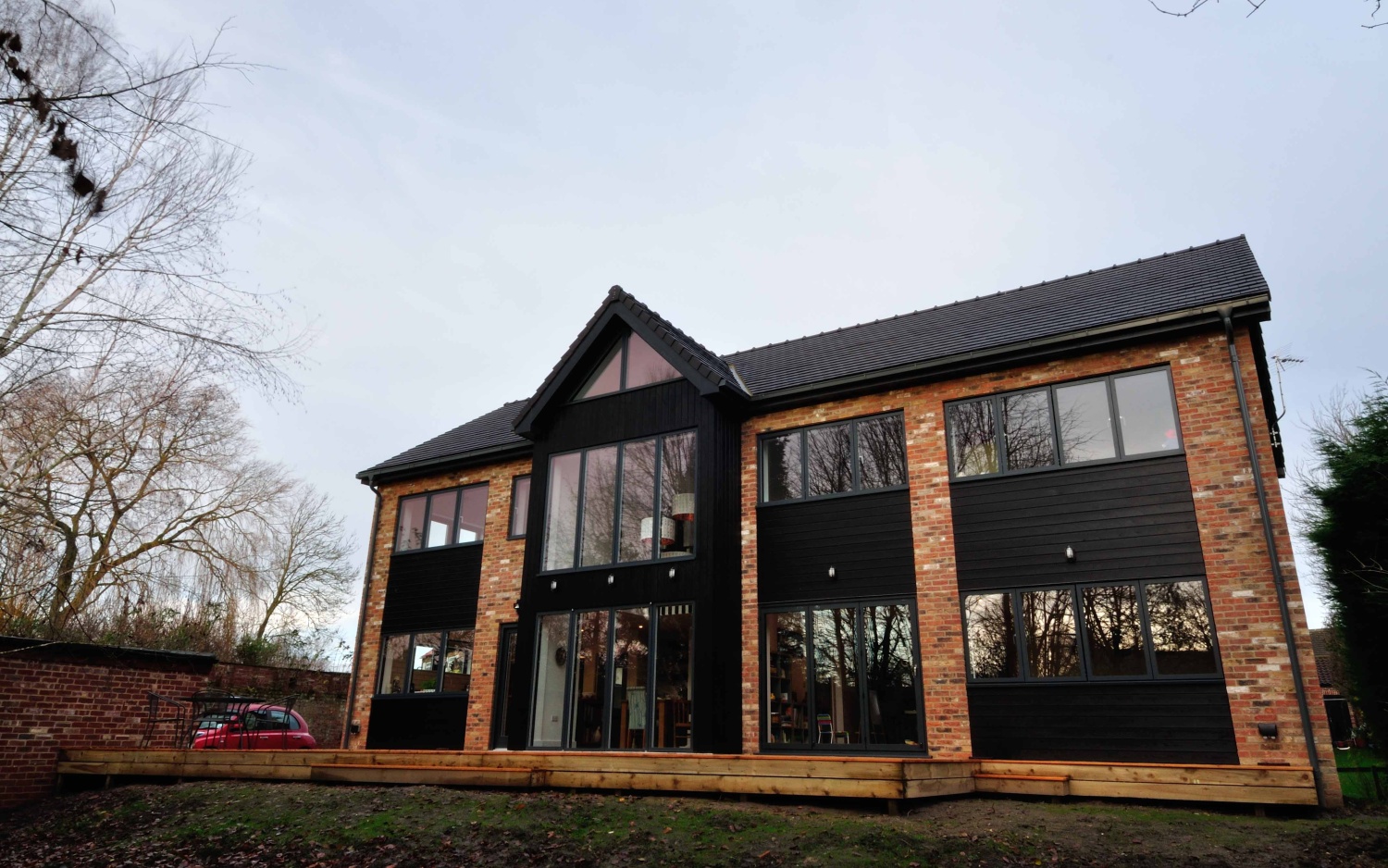
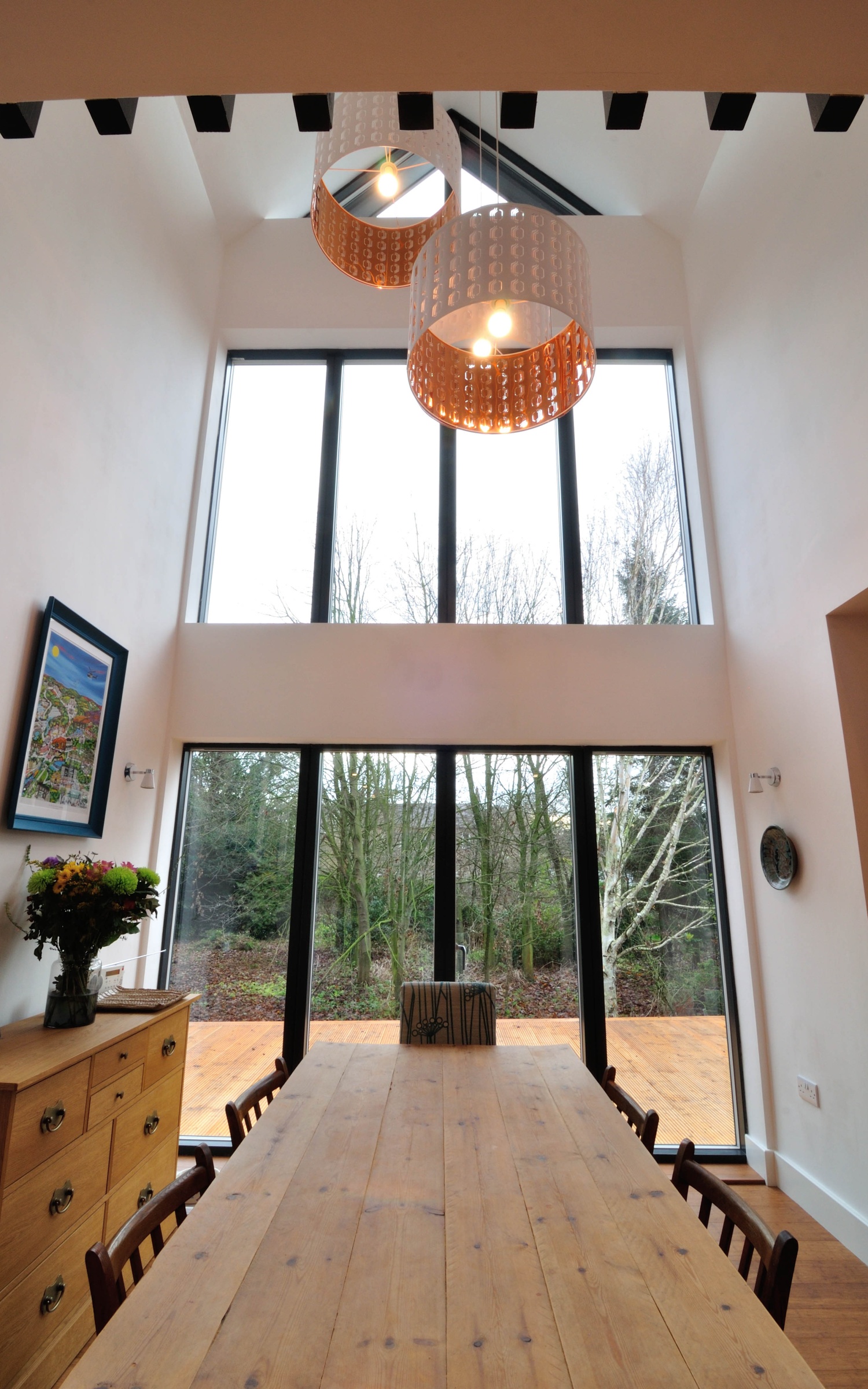
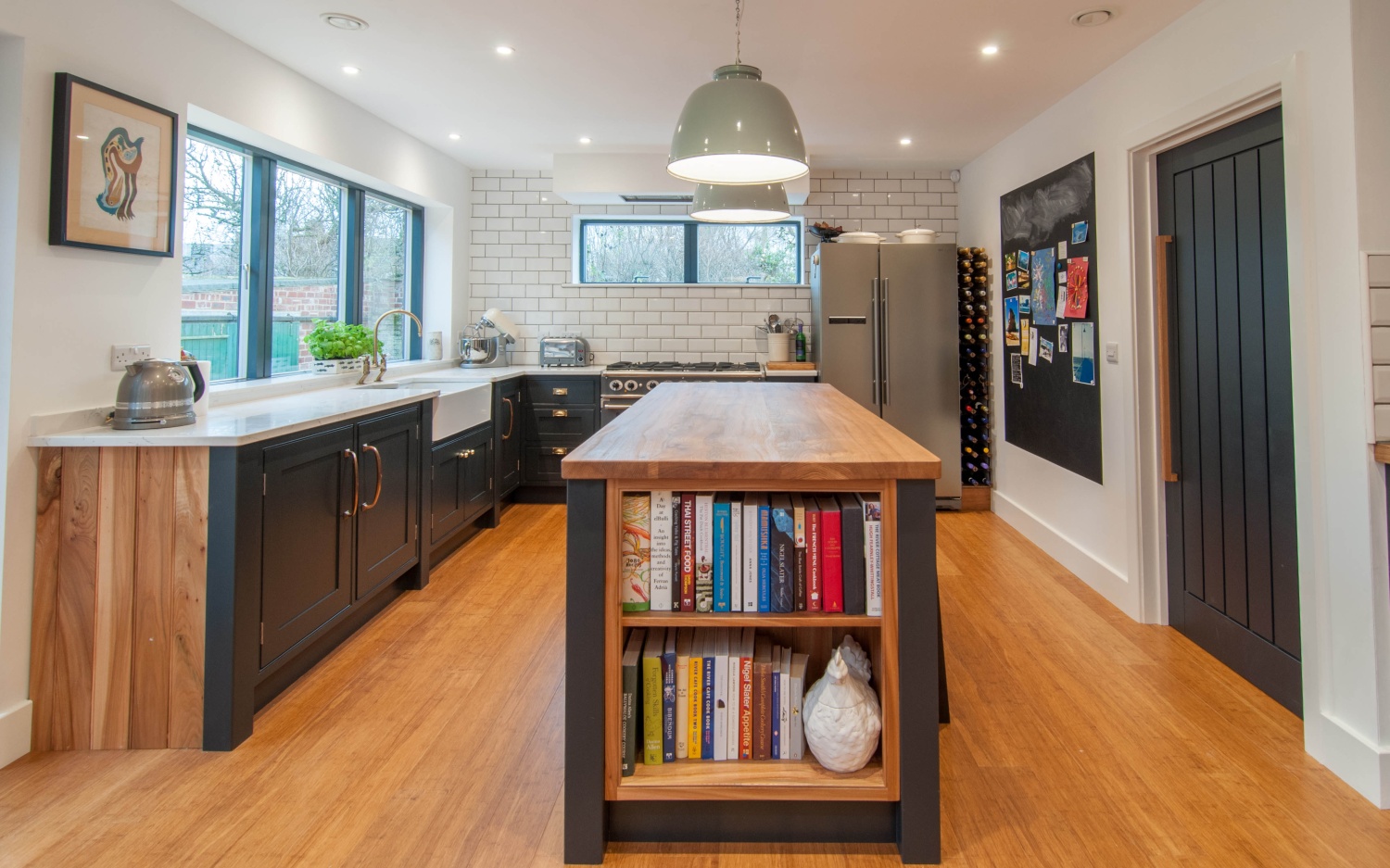

Case study 2: New build in Henley
Project by James, an architect on Design for Me – See his profile here and shortlist him for your project
Project description
New-build replacement dwelling in Henley. The clients wanted a New England inspired home with a modern twist. Costs were a crucial issue for this project and therefore we adopted a contemporary approach but used traditional materials: building the walls all in blockwork and applying a render finish and weatherboarding was a very cost effective method of construction.
363 square metres
£615,000
Medium level of finish
Timescale – 25 months in total
- Concept design – 2 months.
- Pre-application planning submission – 2 months.
- Full planning application – 3 months (including design development).
- Design development and tender – 4 months (preparing technical drawings and getting bids from contractors).
- Appointment of contractor – 2 months (they had to wait for builder to start).
- Construction phase – 12 months.


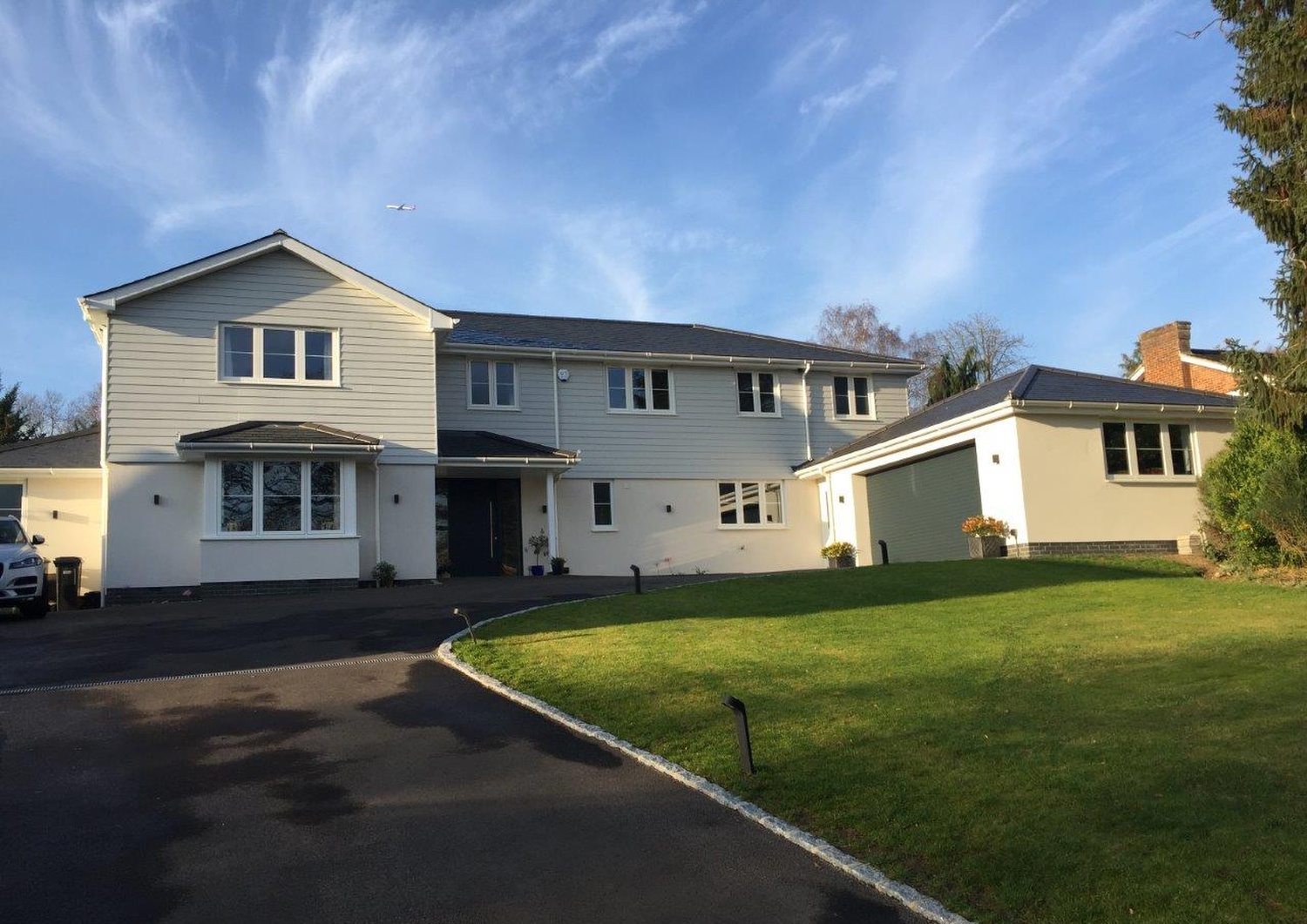
How to avoid delays in your self-build
If time scale is one of your biggest concerns in the self-build process, there are ways of mitigating the risks of long delays with careful planning. Here are some of our top tips for staying in control of timescales during your self-build:
1. Minimise delays during the planning phase
The planning phase is one of the first and biggest hurdles in the self-build process and can be a huge black hole time-wise! See our article here on ways to mitigate unnecessary delays during the planning phase, including seeking pre-application advice and getting the application right the first time!
2. Consider your neighbours
A very common but often unexpected reason for delay can be due to permissions or disputes with your neighbours, particularly where you share a wall or boundary (the Party Wall etc. Act). It’s worthwhile getting to know your neighbours if you don’t already and keeping them abreast of your plans. Not only can they object duiring the planning phase, potentially making planning approval less likely (see above), they can also halt progress in relation to party wall matters. See our article here for more information about party wall matters.
3. Construction contract
It’s important to have a clear and robust construction contract with your builder. Not only will this protect you from rising costs during the construction phase, it will also ensure expectations about timescales are clearly shared by both you and your builder. With a good building contract, your contractor can only request extensions of time for certain, unavoidable delays (such as unseasonable weather or other matters outside of their control). Your architect can act as the administrator of the building contract between you and your builder.
4. Consider ‘design and build’
If speed is of particular concern for you, you might consider the ‘design and build’ route. This is where the contractor is appointed much earlier in the project and will take on the design work as well as the construction (by either appointing an architect you find or, more commonly, their in-house one).
5. Find the right architect
The key to a successful self-build is good research and planning and it’s wise to get your architect involved as early as possible to help with this. Choosing the right architect for your home project is a critical first step, but can also be a bit of a minefield. This is exactly why I set up this website in the first place!
As well as being founder of designfor-me.com, I am also a qualified architect. I found that many homeowners search online to find well established or high-end practices (it makes sense – these companies have bigger marketing budgets with stylish websites). However, such practices are often too busy, too expensive and, in fact, often less experienced in dealing with small residential projects on ‘normal’ budgets.
So I wanted to create this platform for those design professionals I know who are suitable, experienced and eager to take on domestic projects like yours. They are often small, young practices or freelancers. The problem was that, before Design for Me, they were very difficult to find! All you need to do is tell us a bit about your project.
- Quickly see who’s interested in your job.
- Create a shortlist.
- Invite up to three for a no-obligation consultation.
Emily Design for Me
Follow Design for Me’s board New Build Ideas on Pinterest.
